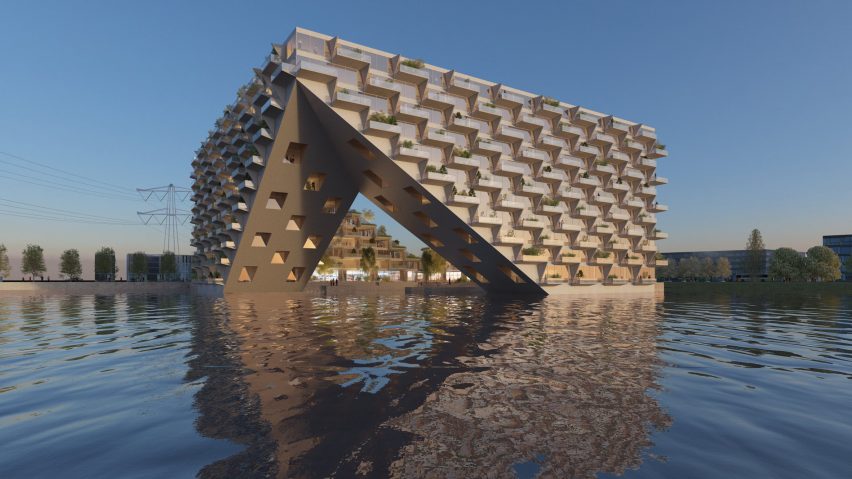
BIG and Barcode Architects unveil terraced block for IJburg waterfront
Bjarke Ingels Group and Barcode Architects have revealed their competition-winning design for an Amsterdam tower, which will terrace down to touch the surface of the IJ lake.
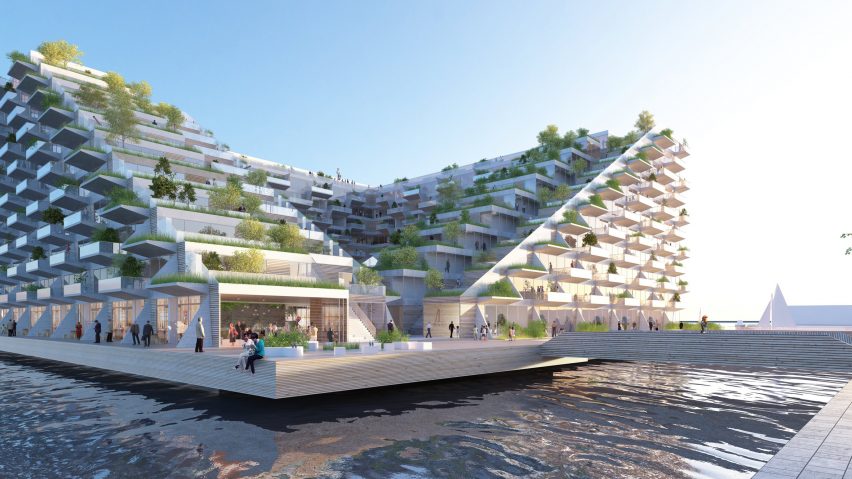
The 46,000-square-metre mixed-use building named Sluishuis is designed as a gateway to Amsterdam's IJburg, a neighbourhood set on artificial islands that float on IJ.
Created by Bjarke Ingel's Copenhagen-based firm BIG and Rotterdam studio Barcode Architects, it features two chamfered corners that stretch down to the jetty or water to open up a courtyard in the centre.
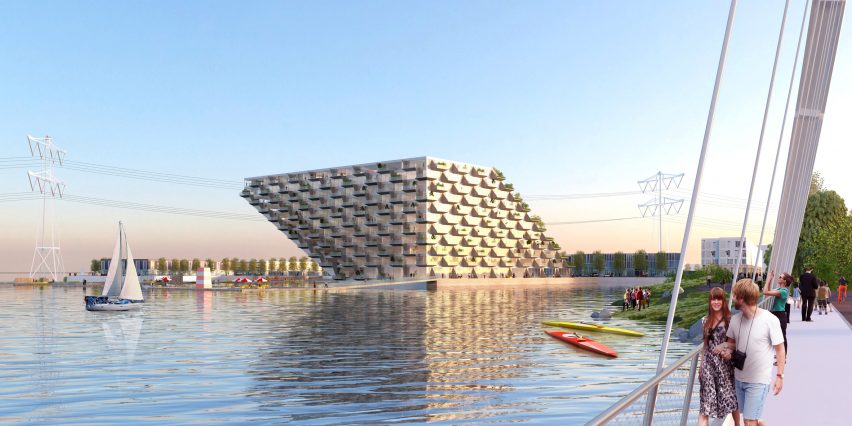
These sloping elements – not dissimilar to those found in BIG's 8 House in Copenhagen and VIA 57 West "courtscraper" in New York – are intended to allow residents to scale the roof and enjoy views over the city.
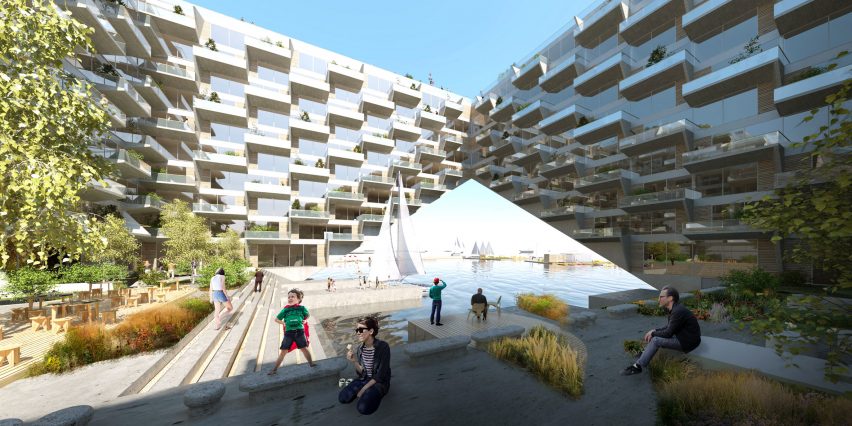
The block will contain 380 zero-energy residences as well as 4,000 square metres of commercial space, 240 underground parking spaces and room for up to 30 houseboats to moor.
"Our Sluishuis is conceived as a city block of downtown Amsterdam floating in the IJ Lake, complete with all aspects of city life. Towards the city, the courtyard building kneels down to invite visitors to climb its roof and enjoy the panoramic view of the new neighbourhoods on the IJ," said Bjarke Ingels.
"Toward the water, the building rises from the river, opening a gigantic gate for ships to enter and dock in the port/yard. A building inside the port, with a port inside the building."
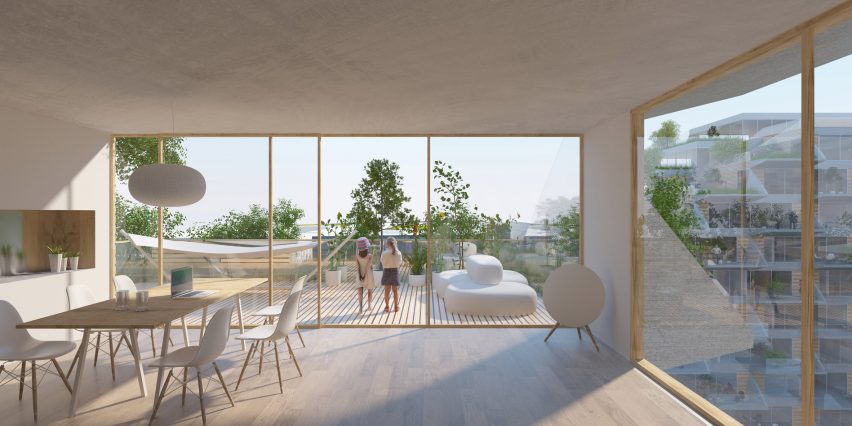
"Having spent my formative years as an architect in Holland at the end of the 20th century, it feels like a homecoming to now get to contribute to the architecture of the city that I have loved and admired for so long," he added.
One of the diagonal cuts frames the view of IJ Lake and brings in daylight for apartments overlooking the courtyard. The other chamfer is formed by terraced gardens intended as a transitioning element from the building's smaller-scaled surroundings.
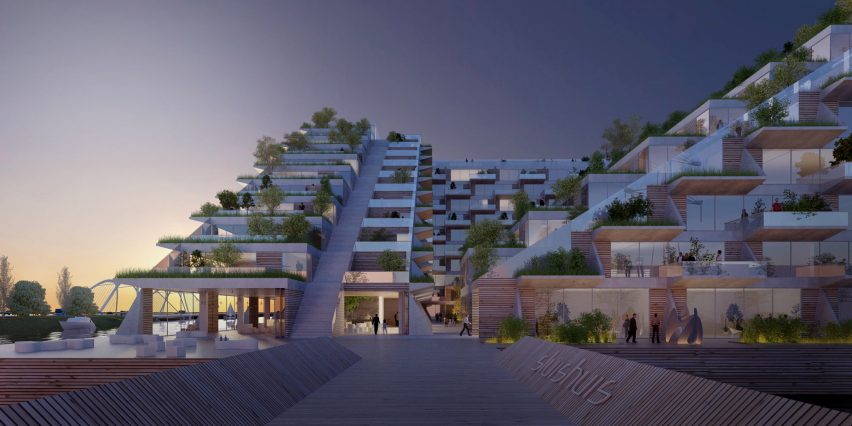
Glass-fronted balconies project from alternate units to continue the stepped formation across both the outer and inner facades of the block.
A promenade will surround the base of the scheme, linking it with a sailing school, floating gardens and colonies of houseboats.
There will also be public access to the roof via its cascading terraces and a small rooftop viewing platform overlooking the lake.

"The world-famous urban environment of Amsterdam was created by the fusion of water and city," said BIG partner Andreas Klok Pedersen. "The new Sluishuis is born of the same DNA, merging water and perimeter block and expanding the possibilities for urban lifeforms around the IJ."
"We have tried to design a building with a surprisingly changing perspective and a unique contemporary character, which reflects the identity of the future residents and all users of Sluishuis," added Barcode Architects partner Dirk Peters.
The outline of the building is intended to transfigure as visitors move around it, being reminiscent of the bow of a boat from one angle and of garden-covered steps from another.
BIG and Barcode Architects are working with construction companies VORM and BESIX to develop the project.
Project credits:
Collaboration: Barcode Architects, Bosch Slabbers, ABT, Van Rossum, Buro Bouwfysica, Klimaatgarant, BIG Ideas
Partners in charge: Bjarke Ingels, Andreas Klok Pedersen
Design lead: Dimitrie Grigorescu
Project manager: Birgitte Villadsen
BIG team: Justyna Mydlak, Nina Vuga, Santtu Johannes Hyvärinen, Jonas Aarsø Larsen, Kirsty Badenoch, Vinish Sethi, Yannick Macken, Ulla Hornsyld, Brage Mæhle Hult, Sebastian Liszka, Sabine Kokina
Barcode team: Dirk Peters, Caro van de Venne, Robbert Peters, Jakub Pakos, Cristobal Middleton, Mojca Bek, Emiliya Stancheva, Egidijus Kasakaitis
Investor rental apartments: MN Services
Client: VORM, BESIX